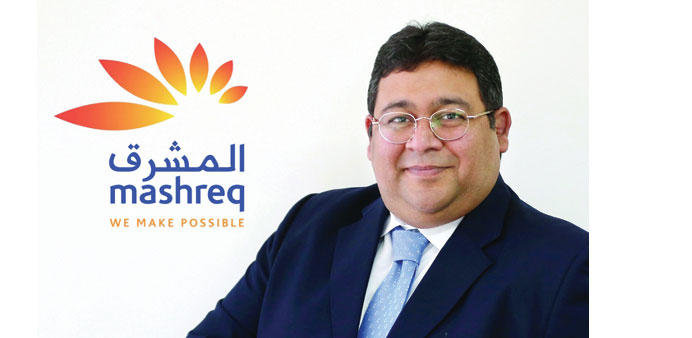Salman Gulzar is head of corporate banking at Mashreq Qatar and an expert in financial markets. The views expressed are his own.
By Salman Gulzar
Mario Draghi, as one of the icons of European integration and unity, has one of the toughest jobs in the continent as he has to provide relevance and context to the euro, the currency that continues to reflect the continent’s divisions on political and economic fronts. Over the last decade of financial turmoil, the eurozone has seen its currency decline by 35%; the continent has featured twice since 2008 in events that have stalled markets and the continent’s growth has been insignificant. Intentions like Grexit and Brexit are further facilitating a perfect storm and shattering confidence of anyone looking to do business in Europe. The three key challenges the eurozone faces are structurally difficult and include the following:
Too many cooks
Unlike Europe’s competition, where the mandate of the central bank is to a singular sovereign entity; Draghi has to ensure that the entire Union is behind him. These negotiations delay and at most times compromise decisions. For a long time now, I have equated the scenario of the European Central Bank and the US Federal Reserve as two surgeons operating on two patients, their respective proverbial economies, where the US relies on Janet Yellen, chair of the Board of Governors of the Federal Reserve System, to keep its economy alive where as Draghi has to manage noise from 19 members of the Union as he tries to avoid a Japanese style of deflation. If there was doubt in a united front, it was made abundantly clear at the time of the Greek crisis and more recently the refugee crisis diversion in the European ranks; a humanitarian emergency which Europe would remember itself from seven decades ago.
Eurozone’s beanstalk that is not growing
Growth in Europe is predicated in revival of corporate spending, which in theory should be spurred by low interest rates; however, the inverse seems to be happening. Corporate investments in Europe have not recovered post 2008 when large European entities started to eliminate debt in favour of liquidity on the balance sheets. In excess of €1.5tn of cash is reflected in the accounts of the non-financial companies in Europe as they continue to take advantage of a weak euro and focus on export. The eurozone has not realised that the boards of these corporate entities continue to evaluate their return on capital, remaining agnostic to low interest rates. While low interest rates will benefit small and medium enterprises (SMEs), the cost of equity is unchanged and its return is a threshold that needs higher yield of return, which is not available in the continent.
What is needed in Europe is a drive for infrastructure development and project flow that engages blue chip corporates. The dilemma once again is the inequality of member states and reluctance of rich economies to fund the poorer economies within the union. This is the only way to manage unemployment in the eurozone that is hovering at 11%, the same levels that the American economy was managing during the Bernanke era.
Deflation
Inflation is typically seen as the vital sign that needs to show effectiveness of stimulus adopted by the central bank. In theory, in a loose monetary policy, prices will grow faster than the targeted inflation rate, which is just under 2% in case of the ECB, and neutralise growth due to cheap credit. This traditional view is being compromised across the globe including Britain and America where price pressure is missing.
In all the negativity in Europe, price of services has grown by 1.4% while food, energy, alcohol and tobacco have also recoded a similar rise. However, one of the key reasons for price pressure and deflation is the decline in commodity prices. Once again, the ECB had miscalculated their assumptions as they had built in a rise in oil prices in the first half of 2015 that never happened. Low oil and commodity prices are therefore stimulating deflation.
The ECB has little choice but to continue and expand its quantitative easing programme beyond September 2016 and into the end of 2018 to achieve the desired results at which time, the programme would reach €3tn.
Nothing to lose for the GCC
In many ways, the GCC (Gulf Cooperation Council) and Opec (Organisation of the Petroleum Exporting Countries) are one of the main reasons the eurozone is facing the challenges it is finding so hard to overcome. Although oil prices are at levels producers would like to see improving, its benefits to the developed world in its form today are counter productive.
With monetary policy tightening imminent in the UK and US, the euro will weaken further and import of goods and services will get more attractive from the continent to the GCC. In a time that Expo 2020 and FIFA World Cup 2022 preparations have started, the UAE and Qatar will benefit from a weak euro facilitating infrastructure development in a timeframe where weak oil prices are expected to persist. European companies will also look to the Middle East for improved margins, thereby bringing in expertise to execute complex construction projects albeit in tight deadlines and a steep learning curve for knowledge of local markets.
Iran coming back in the mainstream economy will provide one of the largest opportunities for Europe. The GCC stands to gain as an established hub of corporate governance in the region; however this remains to be tested in Iran.
The GCC will need to be disciplined in their spending and structure projects where local companies are paired with leading blue chips from Europe for knowledge share.
A weak eurozone is an opportunity that needs to be fully exploited.



